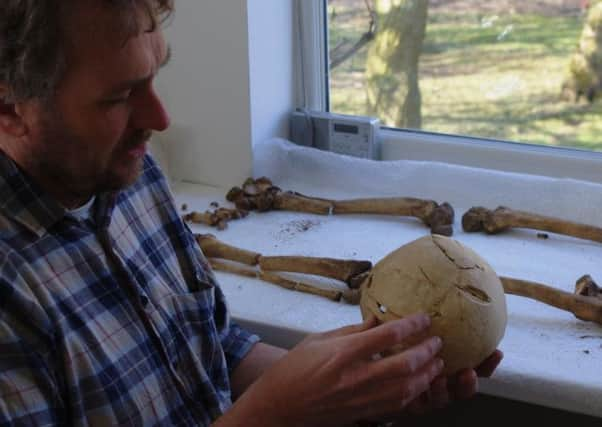Was skeleton part of 1066 Conquest?


The skeleton of the violently killed man was sent to the University of York for analysis to establish whether or not he had died at the Battle of Lewes.
But the individual, who was discovered as part of the excavation of a medieval hospital in Lewes 20 years ago, has been found to date from the time of the Norman Conquest.
Advertisement
Hide AdAdvertisement
Hide AdBattlefield expert Tim Sutherland, from the University of York, said: “The skeleton is apparently unique in that it appears to be the only individual ever recorded which could be related to the Norman invasion.”
English Heritage, which is responsible for Battle Abbey and the 1066 battlefield, has welcomed the “fascinating discovery” but added that further research was needed.
The findings are based on radiocarbon dating carried out at the University of Edinburgh which show that the skeleton dated to 1063 (± 28 years), and was therefore likely to have been involved in the battles associated with the Norman invasion in 1066.
The indiviual died from six sword injuries inflicted on the back of his skull.
Advertisement
Hide AdAdvertisement
Hide AdOsteoarchaeologist Malin Holst from the University of York, who was commissioned by Sussex Archaeological Society to examine the skeleton, said: “The first injury was probably a cut to the right side of the ear and upper jaw. This was then followed by a series of sword cuts, all delivered from the left hand side behind the victim, in a downward and horizontal motion.”
However she has discovered much more which helps build up a picture of the individual.
Malin said: “He ate a diet particularly rich in marine fish, and was at least 45 years old but may have been older.
“He had some spinal abnormalities and suffered from chronic infection of the sinuses.
Advertisement
Hide AdAdvertisement
Hide Ad“He showed age-related wear and tear of the joints of his spine, shoulders and left wrist, which might have been uncomfortable. He had lost a few teeth during life, possibly as a result of receding gums. He had two small tumours on his skull.”
Although he was violently killed, he had sustained some other kind of head injury during life, anything up to two years previously.
She said: “He had sustained an injury to the left temple which caused a blood clot to form. It was well-healed at the time of his death.”
A spokesperson for English Heritage said: “This is a fascinating discovery and a potentially very interesting piece of evidence from the second half of the 11th century.
“It certainly demonstrates the violence of the period.
Advertisement
Hide AdAdvertisement
Hide Ad“It would be a reasonable hypothesis that this individual could have some links to the Norman Conquest, but further research is essential in understanding the potential significance of this skeleton.
“He could after all, simply be an unfortunate victim of a local crime.”